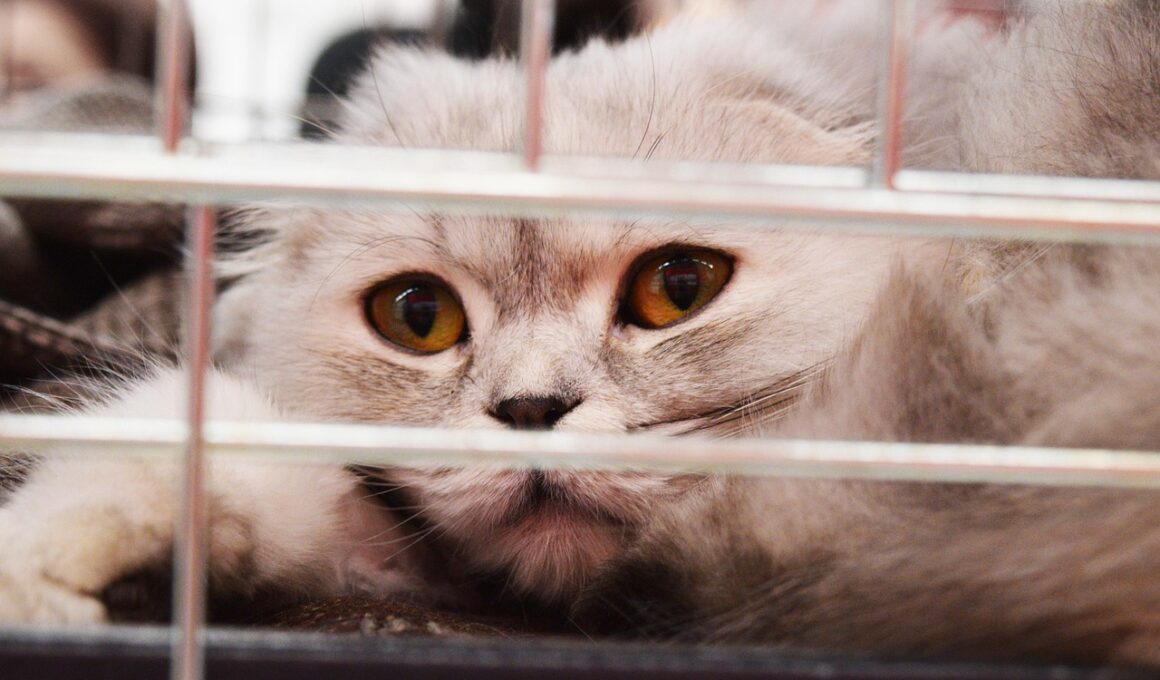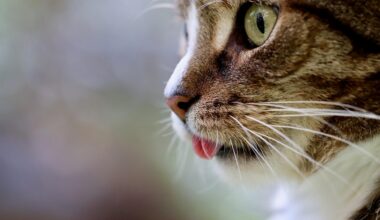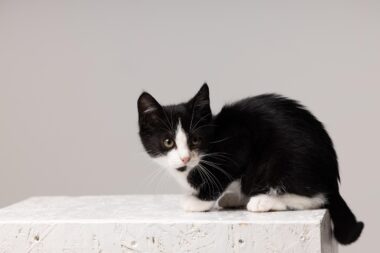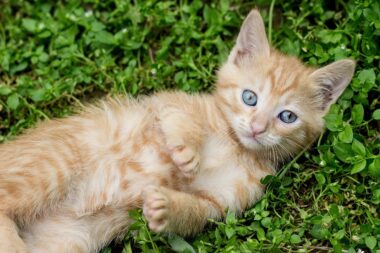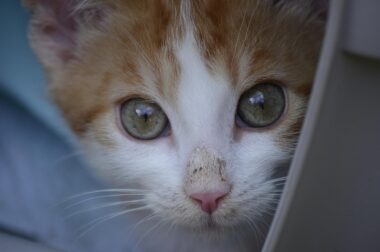From Rescue to Forever Home: The Adoption Process Explained
The journey of a cat from rescue to a forever home is a remarkable and rewarding process that benefits both the cat and the family adopting them. Initially, rescuers assess the cat’s condition, ensuring it receives necessary medical treatment and socialization. This vital stage helps to prepare the cat for its future home by addressing any behavioral or health issues. Many rescue organizations provide details about the cat’s background, enabling prospective adopters to make informed choices. At this stage, one must understand adopting a cat involves responsibility, commitment, and understanding its needs. Therefore, a potential adopter should think about their lifestyle to see if they can provide adequate care. Additionally, it is essential to consider how existing pets might react. Rescuers often assist in matching families with cats, ensuring compatibility. Once the cat is ready, the adoption process typically includes paperwork, a fee, and a home visit. Prospective adopters must demonstrate they can offer a safe and loving environment. The satisfaction of giving a cat a chance at happiness is what makes this process fulfilling for everyone involved. This is the first step to a loving future.
After the initial assessment and paperwork for cat adoption, it is crucial for the new family to prepare their home for the furry arrival. Changes within the home will significantly impact the transition for the cat. Creating a safe space within the house is essential, which means removing harmful objects and ensuring that furniture structure allows a cat to navigate easily. It’s also wise to invest in necessary supplies, including food, water dishes, litter boxes, and toys. You might consider setting up a quiet room where the cat can feel comfortable while adjusting to its new surroundings. Providing vertical spaces, such as shelves or cat trees, can also help the cat feel secure and entertained. Additionally, using bonding tools at this stage, such as treats and gentle toys, encourages positive interactions. Families should also identify a local veterinarian for routine check-ups, vaccinations, and preventative care. Introducing the cat to the family members gradually helps reduce stress and create a sense of safety. It’s essential that everyone understands how to properly handle and care for the cat during the adjustment phase. Taking these preparations into account ensures a harmonious beginning.
Understanding Cat Behavior
Each cat has a distinct personality, so understanding their behavior can help ease the adoption process significantly. Cats may react differently to new environments, and their behaviors can range from curiosity to fear. Initially, some cats will hide or avoid interaction, while others might explore right away. Recognizing these behaviors as natural stress responses is essential for new pet owners. Providing enrichment activities and safe hiding spots allows the cat to feel more comfortable at its own pace. Spending quiet time near the cat without overwhelming it can foster trust and encourage socialization. Over time, simple interactions, such as gentle play and offering treats, can build a bond between the cat and its human companions. Moreover, observing the cat’s body language is crucial in understanding its feelings. Signs such as purring, kneading, or slow blinking indicate a content cat, while arched backs, hissing, or swatting may suggest discomfort or fear. This understanding can guide families on how to respond appropriately and create a nurturing, stress-free environment. With patience and observation, the cat can become a beloved member of the family, thriving in its new forever home.
A significant part of the adoption process is addressing and managing any behavioral concerns that may arise during the initial adjustment period. Cats rescued from challenging situations might exhibit signs of anxiety or fear, which can lead to undesirable behaviors. Patience is key; however, when overlooked, these issues can prompt families to become frustrated. Sometimes, they might even consider returning the cat to the rescue organization. Instead, seeking advice from the rescuers about specific behavioral concerns can promote a better understanding of the cat’s temperament. Training can utilize positive reinforcement through understanding triggers and rewarding desirable actions. Mental and physical stimulation through play is fundamental in redirecting energy and anxiety. It’s beneficial to consult specialized cat behaviorists or trainers for techniques tailored to each cat’s needs. Resources like literature on feline behavior also prove helpful for family education. Environmental enrichment, such as engaging toys and interactive games, encourages healthy behavior and mental stimulation. Promptly addressing anxiety can lead families to form a stronger bond with their cat while ensuring both parties feel secure in their new relationship, securing a joyful experience for everyone involved.
Adoption Finalization and Follow-up
Once the adoption process reaches its concluding phase, various steps ensure a smooth transition for both the cat and the new family. Rescuers play a critical role in providing resources and guidance through the finalization and follow-up stages. Families should review the adoption agreement, ensuring they meet all requirements. A successful adoption often leads to post-adoption resources from the rescue organization, including educational materials on caring for their new pet. It’s essential to maintain open communication with the rescue group, who may offer support or advice for any ongoing concerns. Regular check-ins may also facilitate the transition for both cat and family, promoting an understanding of the pet’s evolving needs. Follow-up visits can provide opportunities to seek answers while fostering community connections among other adopters. Furthermore, sharing updates and photos on social media helps raise awareness about shelter animals and encourages further adoption efforts within communities. Families often report that staying actively engaged with adoption groups provides emotional support and experience sharing. Ultimately, this approach nurtures relationships, ensuring a fulfilling experience for everyone involved, including the marauding furry companions.
Transitioning from a rescue cat to a happily integrated family member is an ongoing journey that extends beyond immediate preparations. New pet owners should continually educate themselves about feline care and behavior to ensure a long-lasting relationship. Providing a safe and loving environment is essential, but it does not conclude there. Adopting a cat implies awareness of its unique emotional and physical needs throughout its life. Families must periodically reassess their caregiving routines based on their evolving understanding of the cat’s behavior, health, and preferences. Regular veterinarian visits remain mandatory to monitor the health of the cat, including vaccinations and parasite control. Additionally, elder or ill cats often require special accommodations. Exploring additional ways to enrich the cat’s life can cultivate a dynamic and engaging environment that enhances mental well-being. Sharing experiences and seeking advice within local pet communities often generates new ideas and solutions to common challenges. Over time, challenges will arise, but fostering resilience through patience, love, and understanding transforms into an enduring bond. Cats indeed become integral members of families, enriching lives while offering unconditional love and companionship.
Celebrating Adoption Success
Once the cat adapts to its new home and relationship, celebrating its adoption journey becomes an essential milestone. This celebration represents the culmination of efforts made by both the cat rescue organization and the adopting family. Families often share success stories through online platforms, which helps inspire and motivate others contemplating rescue animals. Hosting adoption celebration events can further elevate community awareness regarding animal rescue efforts while building connections with fellow adopters. Sharing fun experiences, unique quirks, and the everyday moments that showcase the cat’s personality fosters gratitude and happiness about providing a forever home. Rescue organizations frequently feature such stories to encourage more adoptions, helping save other animals in need. Furthermore, recognizing the cat’s personality and accomplishments reinforces the family’s bond. It also motivates them to keep engaging with local shelters or advocacy groups. Successful adoptions often spark ideas for future rescues, showing families that they can make a difference. Ultimately, celebrating adoption success emphasizes the joy of providing a loving forever home and encourages community involvement. Raising awareness can help other cats find their forever homes as well, ensuring a brighter future for many felines.
The journey from rescuing a cat to providing a loving home is indeed a beautiful symbiosis between humans and pets. As this process unfolds, each step brings opportunities for growth, understanding, and love. Opening one’s heart to a rescue cat transforms not only their life but also the lives of those who adopt them. Many families report that their feline companions enrich their daily lives, offering unconditional affection and companionship. The adoption process, while sometimes challenging, ultimately results in a rewarding experience for both the animals and humans involved. From preparing the home for a new arrival, addressing behavioral issues, securing ongoing support, to celebrating milestones, this journey teaches invaluable lessons about responsibility and empathy. Moreover, sharing success stories and fostering community discussions promotes awareness and further rescues. Each adopted cat tells a unique tale of resilience, making it more important than ever to support local shelters and rescue organizations actively. By engaging, sharing, and celebrating these experiences, families not only honor their feline friends but foster greater compassion for all animals in need. This community spirit counts towards enhancing lives both for the cats and humans involved in their incredible stories.
